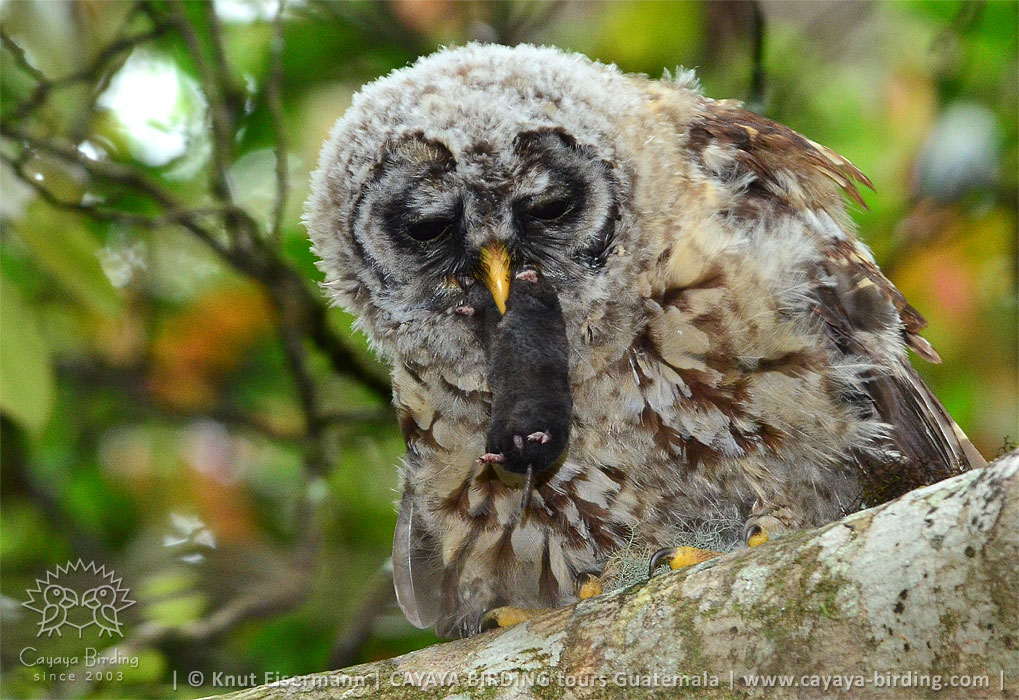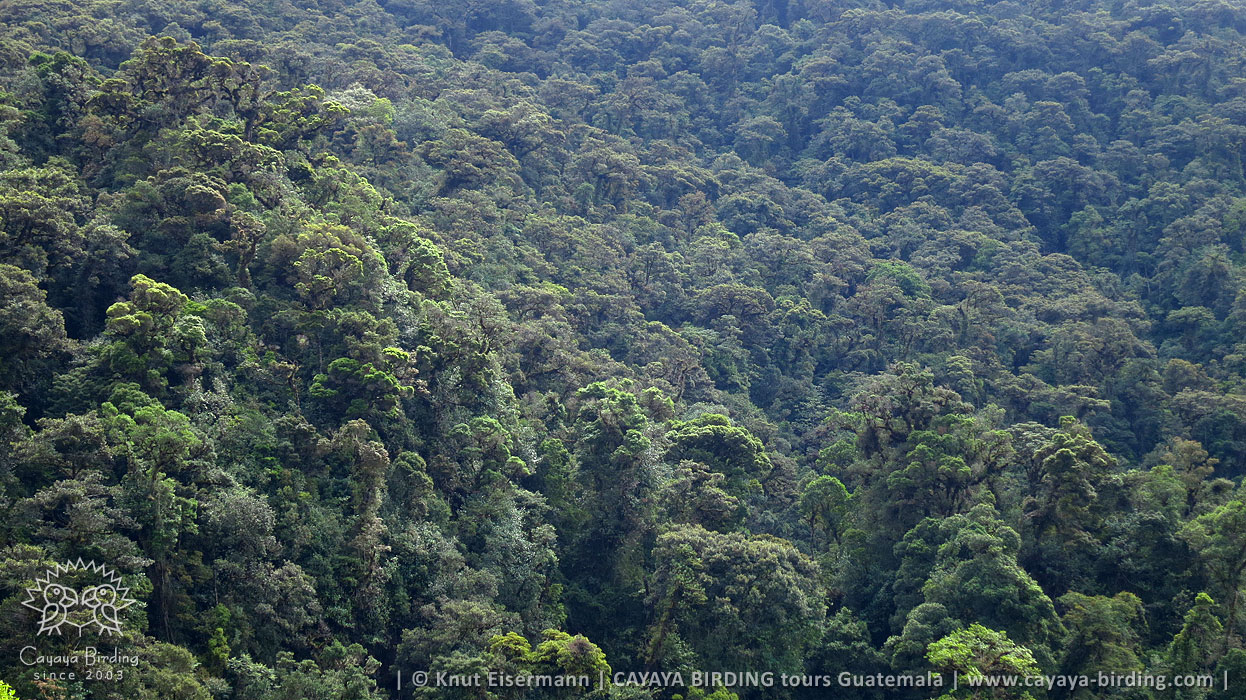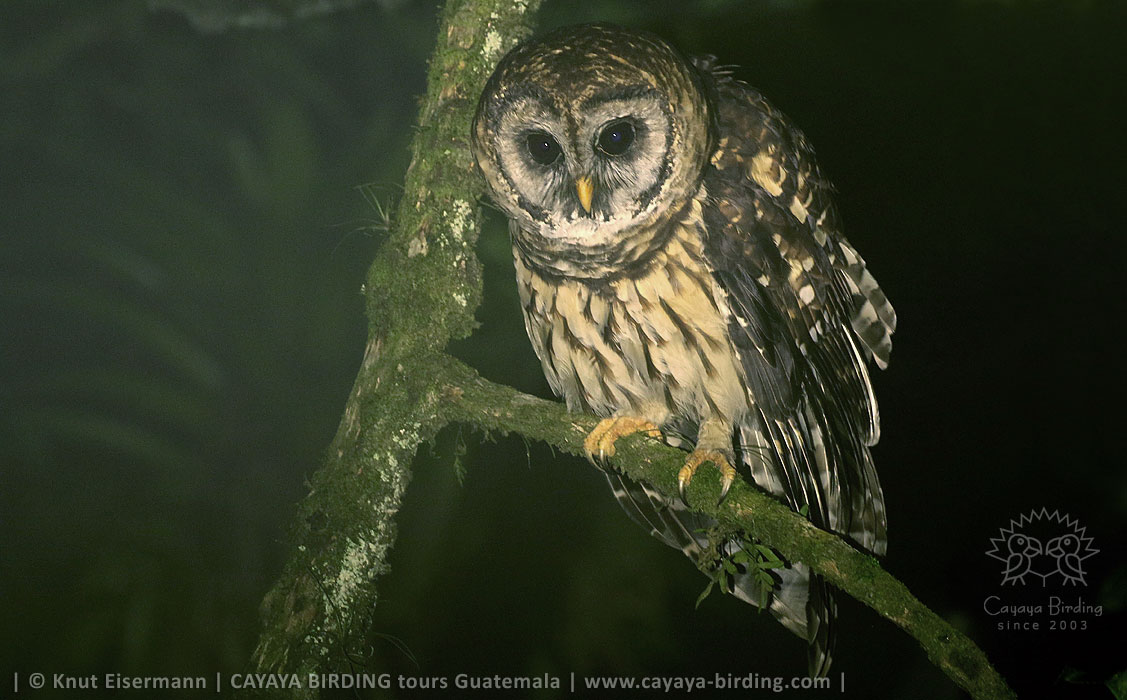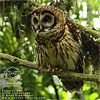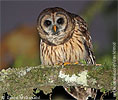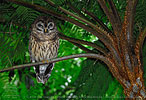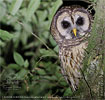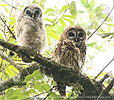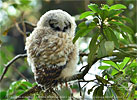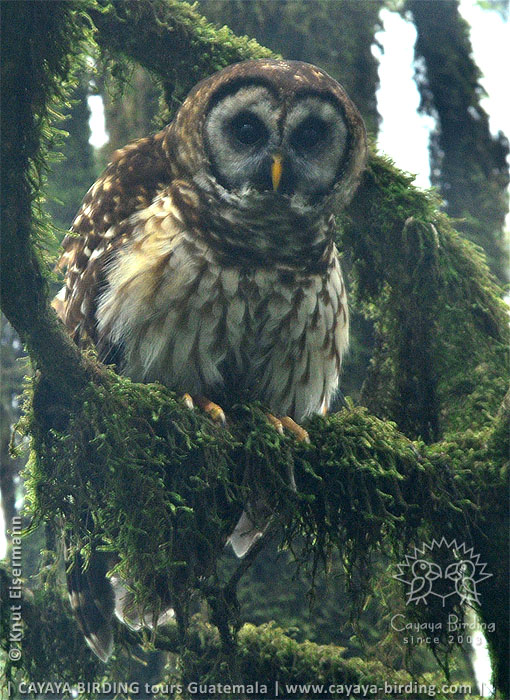Seeing Fulvous Owl in Guatemala with CAYAYA BIRDING
Fulvous Owl (Strix fulvescens) is endemic to the highlands of southern Mexico, Guatemala, El Salvador, and Honduras. In Guatemala it lives mainly in cloud forests above 1,800 m, but occurs also in high-elevation pine-oak and conifer forests. Fulvous Owl is closely related to the Barred Owl (Strix varia) of North America and Cinereous Owl (Strix sartorii, formerly known as Mexican Barred Owl Strix varia sartorii) of Mexico. Its far-carrying calls make Fulvous Owl one of the most obvious owl species of the Guatemalan highlands.
Fulvous Owl is common in Guatemalan humid high elevation forests, where it replaces Mexican Wood Owl (Strix squamulata), which is common in lowland and foothill forests. Most of the CAYAYA BIRDING tours include sites with good chances of seeing Fulvous Owl.
Get in touch to organize your tour for watching Fulvous Owl and other regional endemic birds in Guatemala.
Photographs of Fulvous Owl seen during CAYAYA BIRDING tours in Guatemala
Videos of Fulvous Owl seen during CAYAYA BIRDING tours in Guatemala
Calling Fulvous Owl Strix fulvescens in a cloud forest in the highlands of Guatemala.
Taxonomy
Fulvous Owl (Strix fulvescens) was described as Syrnium fulvescens in 1868 by Sclater & Salvin. Baird et al. (1874), Peters (1940), Mayr & Short (1970), and Eck & Busse (1973) considered it a subspecies, Strix varia fulvescens, of Barred Owl. Based on similar plumage, also AOU (1998) indicated that Fulvous Owl may be conspecific with Barred Owl (Strix varia). Differences in vocalization and size (König & Weick 2008) as well as molecular differences (Barrowclough et al. 2011) confirmed the species status of Fulvous Owl. Barrowclough et al. (2011) pointed out that Fulvous Owl appears to be closer related to Barred Owl of North America than to Cinereous Owl (Strix sartorii, formerly known as Mexican Barred Owl Strix varia sartorii) of Mexico. Ridgway (1914) and Cory (1919) used as common name for Strix fulvescens: Guatemalan Barred Owl.
References
- AOU (1998) The American Ornithologists’ Union check-list of North American birds, 7th edn. American Ornithologists' Union, Washington, DC.
- Baird, S. F., T. M. Brewer & R. Ridgway (1874) A history of North American birds. Vol. 3. Little, Brown & Co., Boston.
- Barrowclough, G. F. (2011) Phylogeography of the Barred Owl (Strix varia): species limits, multiple refugia, and range expansion. Auk 128: 696–706.
- Cory, (1919) Catalog of birds of the Americas. Part II, No.1. Field Museum of Natural History, Zoological Series 13: 1–315.
- Eck, S. & H. Busse (1973) Eulen. Neue Brehm Bücherei Vol 469. Ziemsen Verlag, Wittenberg Lutherstadt.
- König, C. & F. Weick (2008) Owls of the world, 2nd edn. Christopher Helm, London.
- Mayr, E. & L. L. Short (1970) Species taxa of North American birds. Publ. Nutall Ornithol. Club 9. Cambridge, MA.
- Peters, J. L. (1940) Check-list of the birds of the world. Vol. 4. Harvard Univ. Press, Cambridge, MA.
- Ridgway, R. (1914) The birds of North and Middle America. Part 6. Bull. US Natl. Mus. 50:1–882.
- Sclater, P. L. & O. Slavin (1868) Descriptions of new species of birds of the families Dendrocolaptidae, Strigidae, und Columbidae. Proc. Zool. Soc. London: 53–60.
